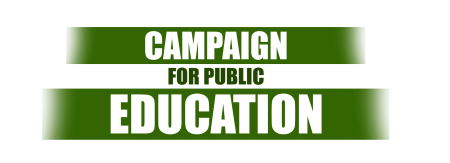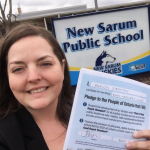Ford in. Sex Ed out.
Alongside no more sex-ed in school classrooms, cheaper gas, cheaper electricity, an end to carbon cap-and-trade measures and tax cuts for almost everyone, the big components of Premier-elect Doug Ford’s plan include cuts to the corporate tax rate, the lifting of restrictions on resource development in Ontario’s north, and the cancellation of a planned minimum wage increase.
For 2 million school children across Ontario and for their teachers the elimination of the sexual education components of the Government’s Health and Physical Education curriculum is certain to be highly contentious. Teachers are already vowing to continue the instruction themselves.
But many have never actually read what the curriculum contains. Do it now while it’s still on the Government site. https://www.ontario.ca/page/sex-education-ontario
(HERE ARE THE DETAILS FOR FUTURE REFERENCE.) SEX EDUCATION IN ONTARIO
Ontario’s updated Health and Physical Education Curriculum includes sexual education (“sex ed”). Get accurate information about the topics and concepts students learn in school – by grade level.
THE CURRICULUM AT A GLANCE
The Health and Physical Education curriculum has four main sections for each grade:
- Living Skills: understanding themselves, communicating and interacting positively with others and learning to think critically and solve problems
- Active Living: active participation, physical fitness and safety
- Movement Competence: skills for moving properly and with confidence
- Healthy Living: learning about health, making healthy choices, and understanding the connections to everyday life
Students also learn about mental health across the curriculum.
Sex education is part of the “Healthy Living” section, under the category of Human Development and Sexual Health, which makes up about 10 % of the curriculum.
In this section, students learn information that can help them to make healthy decisions about things like:
- food
- safety at home, school and in the community
- alcohol and other substances
- sexual activity
TOPICS BY GRADE
The following charts show what students will learn in the Healthy Living portion of their Health and Physical Education classes.
GRADE 1
| TOPIC | KEY CONCEPTS |
|---|---|
| Healthy eating |
|
| Personal safety and injury prevention |
|
| Substance use, addictions and related behaviours |
|
| Human development and sexual health (“sex ed”) |
|
GRADE 2
| TOPIC | KEY CONCEPTS |
|---|---|
| Healthy eating |
|
| Personal safety and injury prevention |
|
| Substance use, addictions and related behaviours |
|
| Human development and sexual health (“sex ed”) |
|
GRADE 3
| TOPIC | KEY CONCEPTS |
|---|---|
| Healthy eating |
|
| Personal safety and injury prevention |
|
| Substance use, addictions and related behaviours |
|
| Human development and sexual health (“sex ed”) |
|
GRADE 4
| TOPIC | KEY CONCEPTS |
|---|---|
| Healthy eating |
|
| Personal safety and injury prevention |
|
| Substance use, addictions and related behaviours |
|
| Human development and sexual health (“sex ed”) |
|
GRADE 5
| TOPIC | KEY CONCEPTS |
|---|---|
| Healthy eating |
|
| Personal safety and injury prevention |
|
| Substance use, addictions and related behaviours |
|
| Human development and sexual health (“sex ed”) |
|
GRADE 6
| TOPIC | KEY CONCEPTS |
|---|---|
| Healthy eating |
|
| Personal safety and injury prevention |
|
| Substance use, addictions and related behaviours |
|
| Human development and sexual health (“sex ed”) |
|
GRADE 7
| TOPIC | KEY CONCEPTS |
|---|---|
| Healthy eating |
|
| Personal safety and injury prevention |
|
| Substance use, addictions and related behaviours |
|
| Human development and sexual health (“sex ed”) |
|
GRADE 8
| TOPIC | KEY CONCEPTS |
|---|---|
| Healthy eating |
|
| Personal safety and injury prevention |
|
| Substance use, addictions and related behaviours |
|
| Human development and sexual health (“sex ed”) |
|
GRADE 9
| TOPIC | KEY CONCEPTS |
|---|---|
| Healthy eating |
|
| Personal safety and injury prevention |
|
| Substance use, addictions and related behaviours |
|
| Human development and sexual health (“sex ed”) |
|
GRADE 10
| TOPIC | KEY CONCEPTS |
|---|---|
| Healthy eating |
|
| Personal safety and injury prevention |
|
| Substance use, addictions and related behaviours |
|
| Human development and sexual health (“sex ed”) |
|
GRADE 11
| TOPIC | KEY CONCEPTS |
|---|---|
| Healthy eating |
|
| Personal safety and injury prevention |
|
| Substance use, addictions and related behaviours |
|
| Human development and sexual health (“sex ed”) |
|
GRADE 12
| TOPIC | KEY CONCEPTS |
|---|---|
| Healthy eating |
|
| Personal safety and injury prevention |
|
| Substance use, addictions and related behaviours |
|
| Human development and sexual health (“sex ed”) |
|
SEXUAL HEALTH EDUCATION BY GRADE
Below are more details on what students will learn about human development and sexual health (sex ed) and why these concepts are being taught at certain age levels.
GRADE 1
Students will learn:
- to identify body parts by their proper names, including genitalia
- about their senses and how they function
- basic good hygiene habits (E.G. washing your hands, using tissues)
When children know the correct names of their body parts, they can communicate clearly and ask for help in case of illness, injury or abuse.
GRADE 2
Students will learn:
- the basic stages of human development (E.G., infant, child, adolescent) and related body changes
- good hygiene habits for oral health (E.G., brushing your teeth, flossing, visiting the dentist regularly)
Before puberty, helping children to understand that their bodies will change (E.G., losing baby teeth) can help them communicate potentially unhealthy changes (E.G., pain) to a trusted adult.
GRADE 3
Students will learn:
- about healthy relationships with peers and family (E.G., accepting differences, listening, mutual respect, honesty, open communication)
- how to overcome unhealthy aspects of relationships with others (E.G., bullying, peer pressure, being left out)
- about factors and habits that can affect physical and emotional development (E.G., safe environment, caring adults, feeling like you belong, sleep, food, physical activity)
- how visible differences (E.G., skin, hair and eye colour, clothing, physical ability) and invisible differences (E.G., learning abilities, cultural values and beliefs, gender identity, different family types such as one-parent, two-parent, two-mom or two-dad, grandparents, caregivers) make each person unique
- ways of showing respect for differences in others
As a foundation for healthy relationships later in life, students will learn about what makes them unique and different from others, and how to show respect for all.
GRADE 4
Students will learn:
- the physical changes that happen during puberty, and the emotional and social impact these changes can have on a developing child
- how personal hygiene needs may change during puberty (E.G., the increased importance of regular bathing)
Today, children enter puberty earlier: on average, girls enter puberty between 8-13 years old and boys enter puberty between 9-14 years old. Learning about puberty before most students fully experience it helps prepare young people for changes in their bodies, emotions and social relationships.
GRADE 5
Students will learn:
- to identify parts of the reproductive system, and how the body changes during puberty
- about the process of menstruation and sperm production
- to describe emotional and interpersonal stresses related to puberty
- to identify strategies to manage stress and enhance their emotional well-being and mental health
Puberty can be stressful, and helping students to understand changes in their bodies can help them cope. Students will also continue to learn the importance of showing respect for all, including those who may be entering puberty earlier or later than their peers.
GRADE 6
Students will learn:
- about factors that may affect the development of a person’s understanding of themselves or personal identity (E.G., body image, stereotypes, self-awareness, cultural and gender identity)
- the physical, social and emotional changes that may occur in adolescence after the initial start of puberty (E.G., body growth, skin changes, increasing influence of peers, increased intensity of feelings) and how this impacts healthy relationships
- to make decisions in their personal relationships that show respect for themselves and others, including the importance of consent and clear communication
- how stereotypes, such as homophobia and assumptions about gender, race, sexual orientation, ethnicity, culture and abilities, can affect how a person feels about themselves, their feelings of belonging and relationships with others
- appropriate ways to respond to and change assumptions and stereotypes
As children grow older and enter adolescence, understanding how the many changes happening in their lives may affect them and their peers helps build a healthy sense of who they are.
By Grade 6, students have developed some self-awareness and coping skills, and also learned critical thinking and reflective skills to solve problems and examine issues, which they will apply to learning about stereotypes and assumptions.
Through challenging these stereotypes and assumptions, they not only continue to learn respect for others, but also self-confidence in their own identity.
GRADE 7
Students will learn:
- the importance of having a shared understanding with a partner about: delaying sexual activity until older, reasons for not becoming sexually active, the concept of consent and how to communicate consent, and the need to clearly communicate and understand decisions about sexual activity in a healthy relationship
- how to identify common sexually transmitted infections (STIs) and describe their symptoms
- how to prevent STIs (including HIV) and unintended pregnancy, including delaying first intercourse and other sexual activities until they are older, and using condoms consistently if and when they become sexually active
- physical, emotional, social and psychological factors to consider when making sexual health decisions (E.G., STIs, pregnancy, side effects of contraception, social labelling, cultural teachings, gender identity, and impact on other relationships)
- how relationships with others and sexual health may be affected by physical and emotional changes in puberty and adolescence
Students need information and skills to make sound decisions about their health and well-being before they face a situation where they may need that information.
Teaching about sexual health and development does not increase sexual behaviour, and can actually prevent risky activity.
GRADE 8
Students will learn about:
- factors that could affect someone’s ability to make safe and healthy decisions about sexual activity
- sources of support related to sexual health (E.G., parents, health professionals, in-school resources, local community groups, religious leaders, an elder)
- gender identity, gender expression and sexual orientation, and how to identify factors that can help all young people to develop positive personal identities
Learning respect for their peers helps to ensure young people build positive, healthy understanding of themselves.
GRADES 9-12
Students are required to take one Health and Physical Education credit in high school. However, they may choose to continue to take additional course in other grades. These courses build on learning from Grades 1-8. See below for what students will learn in the in the Human Development and Sexual Health component of those courses.
GRADE 9
Students will learn about:
- preventing STIs and unintended pregnancies and helpful sources of information and support (E.G., doctor, public health unit)
- gender identity and sexual orientation, and how different things like acceptance, stigma, stereotypes, self-awareness, culture, religion, and media can influence a person’s understanding of themselves
- how to build healthy relationships with peers, family members and potential romantic partners (E.G., honesty, open communication and respect)
- how to think in advance and to apply their knowledge of sexual health and safety, including consent and sexual limits
High school students are encouraged to think critically about the information they’ve learned about sexual health, in the same way they are encouraged to apply these same critical thinking skills to decisions about other things that impact their health like food choices, personal safety and fitness.
Students also continue to learn about the potential implications of online activities (E.G., texting and sending personal photos) and how to use electronic technologies appropriately.
GRADE 10
Students will learn:
- how a variety of factors (E.G., their values/beliefs, what they see in media, setting and communicating limits) can influence a person’s decisions about sexual activity
- common misconceptions about sexuality in our culture, and to explain how these may cause harm to people and how they can be responded to critically and fairly
- how being in an exclusive romantic relationship with another person may affect them and their relationships with others
Providing information and opportunities to think, discuss and explore ideas helps students to understand and express their identity as it develops.
GRADE 11
Students will learn:
- about mental health/illnesses and addictions, their causes and symptoms, and their effects on personal health and well-being
- how proactive health measures and supports (E.G., regular medical exams such as Pap tests) can minimize the risk of reproductive or sexual health problems
- how to use personal and interpersonal skills to deal with stress and help others in stressful situations (E.G., abusive relationships, illness, separation/divorce)
- the negative stigma sometimes associated with mental illness and ways to reduce it in their community
As students near the end of high school, they learn self-awareness and self-monitoring skills that help them to:
- understand their strengths and needs
- take responsibility for their actions
- monitor their own health progress and fitness goals
- continue to acquire health knowledge and apply it throughout their lifetime
GRADE 12
Students will learn:
- how relationships may develop through various stages (with an emphasis on communicating throughout those stages)
- the skills and strategies needed to maintain a satisfactory relationship as it evolves (E.G., conflict resolution strategies)
- skills and resources they will need to maintain their health and well-being as they become more independent
- about how their strengths and interest can be applied to the development of life plans and goals
- to analyze how relationships are portrayed in the media, and how they can take action to encourage more realistic and inclusive messaging
The final year of high school emphasizes how students can maintain the habits of healthy, active living throughout their lives.
WHAT’S CHANGED
The world has changed since the sexual health education section of the curriculum was last updated in 1998 – 17 years ago.
Research shows that children now enter puberty earlier. Young people now have widespread access to the Internet, social media and smart phones, giving them easy access to both helpful and potentially harmful and incorrect information.
Educating children with accurate and current information, skills and strategies to help them navigate a digital world can help keep them safe and healthy.
TEACHING THE CURRICULUM
The Human Development and Sexual Health (sex ed) component of the Health and Physical Education curriculum guides teachers to plan what they teach with the goal of establishing a foundation of mutual respect, and understanding for diverse perspectives in the classroom.
It will not replace the role of parents in educating their children about sexual health




